Amid rising prominence of the Indigenous-focused Fourth Cinema, the people of Aotearoa and Pasifika have become influential contributors, creating films that not only provide critical perspectives on their postcolonial identities, but also celebrate their cultures and differences. This depth is evident in the film Vai (2019), which was collaboratively directed by nine Pasifika women, and Taika Waititi’s Hunt for the Wilderpeople (2016), whose director hails from Raukokore region New Zealand. Both films critically explore the necessity of Indigenous identity and self-determination in a contemporary context. Vai presents a pan-pacific indigenous perspective rooted in intersectional feminism (Gauthier, 2021), while Hunt for the Wilderpeople offers a theatrically humorous response to state violence (Aikman, 2017). In addition to these critiques, the films celebrate the uniqueness of their indigenous cultures. Vai honours Pasifika woman and Pacific Islander epistemology (Gauthier, 2021), while Hunt for the Wilderpeople celebratesthe fundamental Tūhoe value of manaaki tangata (‘be kind and generous to people’) (Aikman, 2017, p. 72). Overarchingly, these two films are compelling examples of the ability of the Fourth Cinema to instigate social awareness while contributing to the intellectual health of indigenous communities (Smith, 2020, p. 492).
Both Vai and Hunt for the Wilderpeople exemplify Fourth Cinema in their ability to critically challenge colonial perspectives on indigenous cultures by privileging “Indigenous ways of knowing and doing” (Smith, 2020, p. 490). The film captures the life of Pasifika women through the symbolic character Vai, whose life is depicted in nine vignettes, each directed by a different woman connected to the island where the scene takes place (Figure 1), including Samoa, Niue, Aotearoa, Fiji, Tonga, Solomon Islands, and Kuki Airani (Cook Islands) (Gauthier, 2021, p. 1). The film is both transnational and anti-national; it transcends the bounds of a single nation and works to dismantle constricting postcolonial myths associated with national categorisations (Gauthier, 2021, p. 10). The film’s direction by a collective of intersectional feminist filmmakers rekindles pan pacific ties, healing alliances cut by colonisation (Gauthier, 2021, p. 2). Vai’s premiere to a global audience at the Berlin International Film Festival also challenged the historically male and monocultural history of Auteur Theory, which saw the director as the key creative agent of a film (Gauthier, 2021, p. 2), overarchingly highlighting the revolutionary influence of critical intersectional feminism within Vai’s construction.
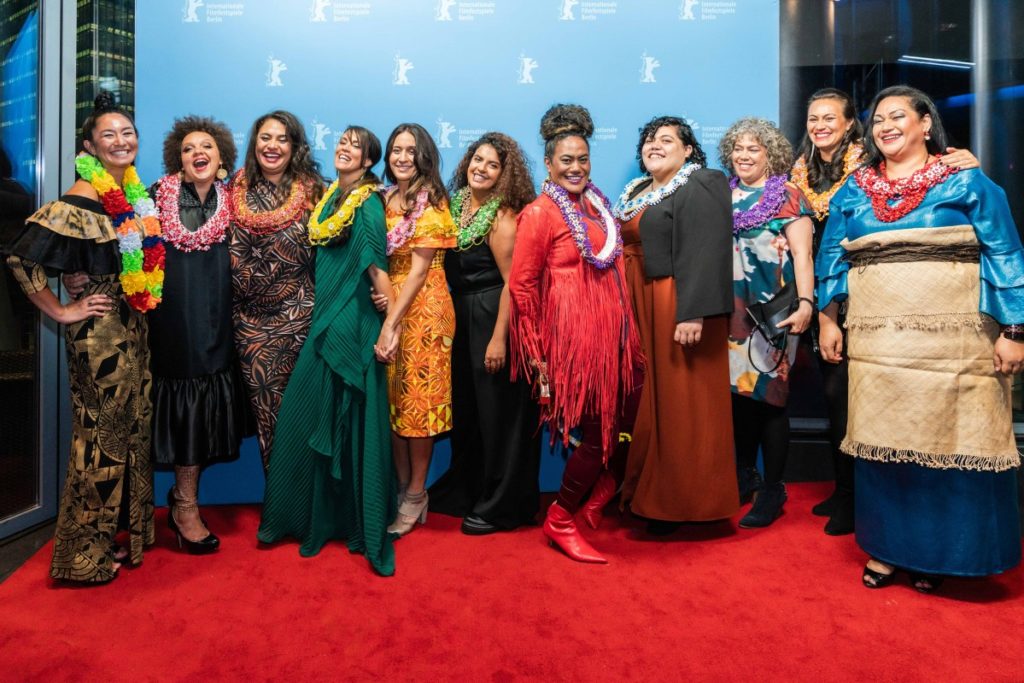
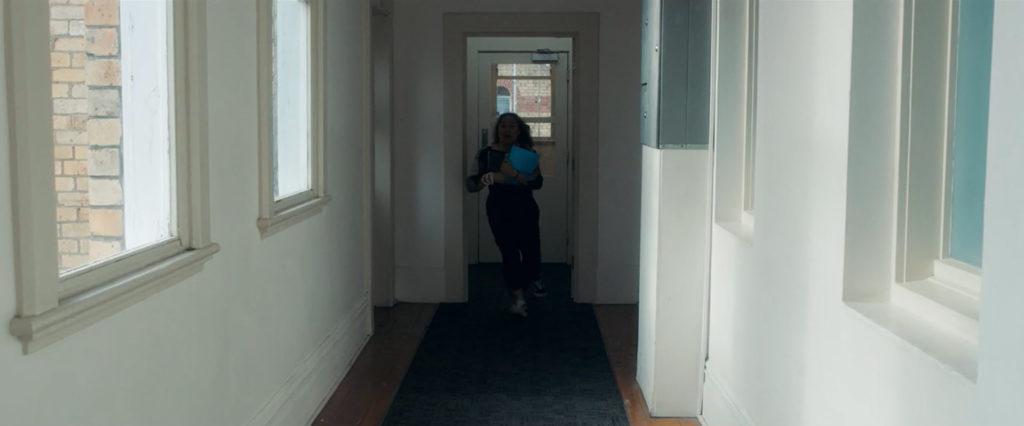
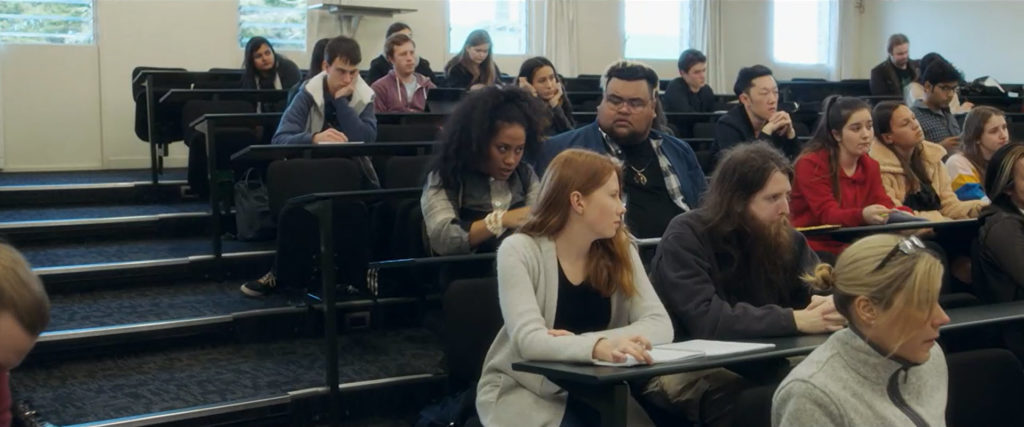
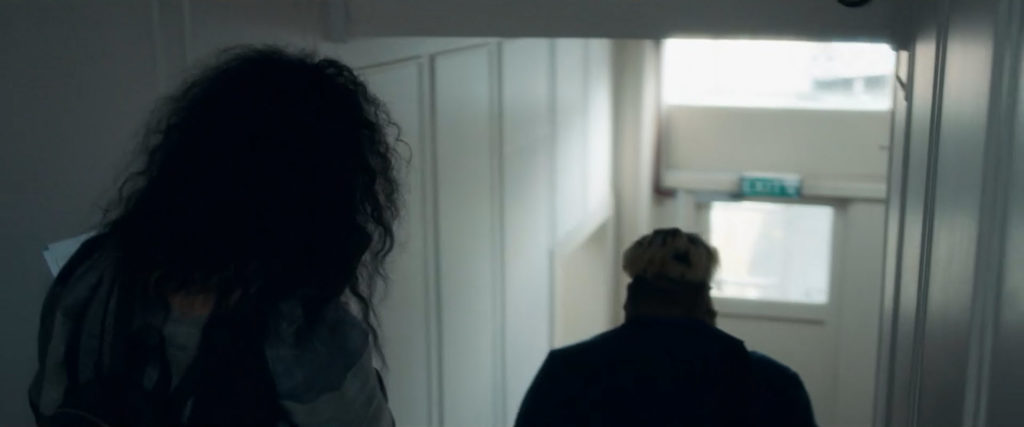
Vai’s cinematic challenging of postcolonial boundaries continues into the film’s content, particularly evident in Amberley Jo Aumura’s vignette capturing Vai at 21 as she struggles under the pressures of studying in New Zealand while providing for her family and community. Aumura re-envisions colonial ideals, like university education and urban living, from an Indigenous point of view (Gauthier, 2021, p. 4). Unlike the vivid, primarily green and blue colour plate and natural imagery which characterises most of the film, this scene’s cinematography is muted, grey and linear (Figure 2). This is the only scene absent of familial land and life-sustaining water, symbolic of the depleting toll of Vai’s lifestyle away from home (Gauthier, 2021, p. 8). Through a carefully choreographed single tracking shot that follows Vai through the university, Aumura empowers Vai’s vision of her world (Gauthier, 2021, p. 4). We see her in ceaseless movement, a visual metaphor for her endeavour to keep up, despite the pressures made evident from her incessant phone calls: work yet another double shift, contribute finically to a wedding at home in Samoa, increase her rent payments and care for her injured father.
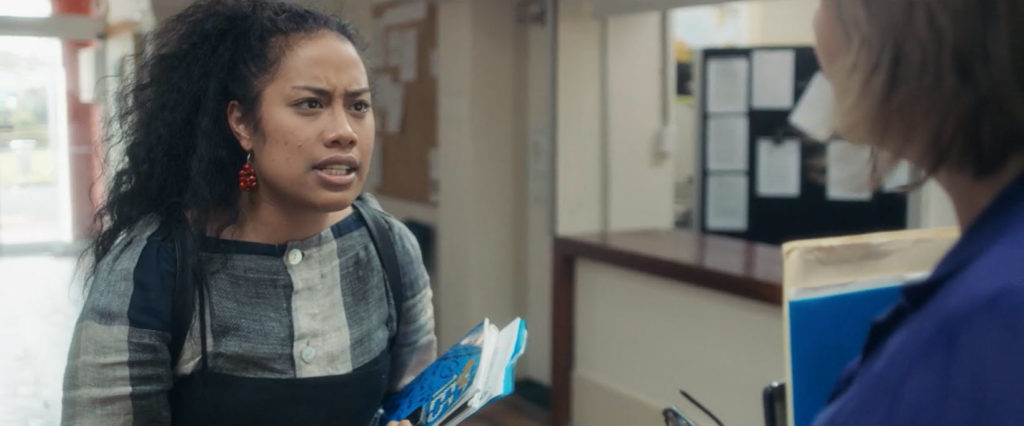
The scene culminates with a tightening shot and intensifying non-diegetic sound as Vai confronts her professor with these burdens (Figure 3). The academic’s talk of “priorities” oozes apathy against the audience’s awareness of Vai’s perspective, revealing how systemic racism faced by Māori and Pacific Islanders is guileful perpetuated in contemporary New Zealand (Gauthier, 2021, p. 6). Aligning with the ethos of Fourth Cinema, Aumura’s challenges ways of living and systems of power in the neo-liberal capitalist nation-state (Gauthier, 2021, p. 4) through Vai’s intersectional feminist identity.
Waititi’s Hunt for the Wilderpeople similarly confronts its postcolonial context, employing the critical and creativity characteristics of Fourth Cinema (Smith, 2020, p. 494) to address colonial violence and child abuse. Waititi examines how Indigenous subjectivities are ‘let to die’ within postcolonial society (Aikman, 2017, p. 62) through indirect murder, including an increased risk of death, political death and rejection (Aikman, 2017, p. 61). The film’s opening scenes employ hyperbolic humour to critically engage with the structural violence maintaining Aotearoa’s high rates of child poverty and youth suicide (Aikman, 2017, p. 61). As protagonist Ricky arrives at his new foster home, child welfare officer Paula describes him as a “real bad egg”, listing his crimes of “disobedience”, “throwing rocks”, and “loitering”, supplemented by an exaggerated montage that satirically villainises Ricky. The dark colourisation and an ominous buzzing sound appear ridiculous as the small child “spits”, “kicks stuff”, and waddles out of a convenience store with arms stuffed with stollen chips (Figure 4). This juxtaposition critically highlights the banality of crimes that have funnelled children, disproportionately Māori and Pasifika, into the indirect murder of incarcerated and colonial violence (Aikman, 2017, p. 63).
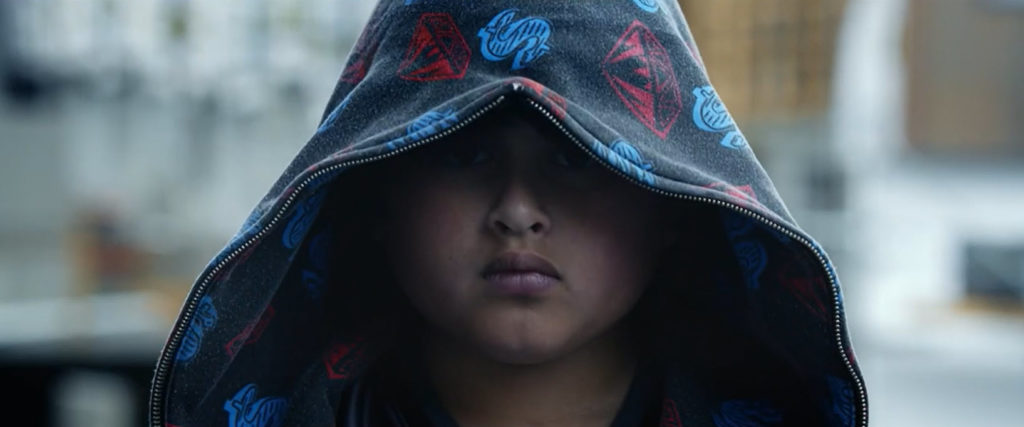
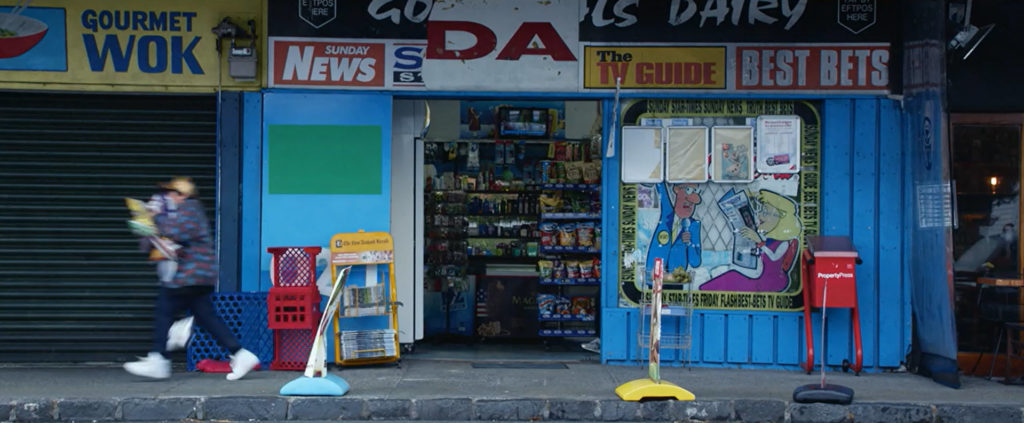
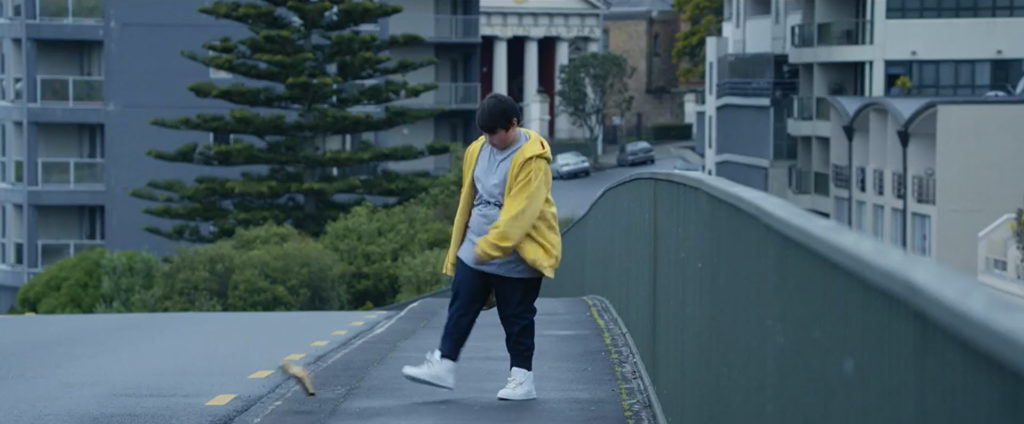
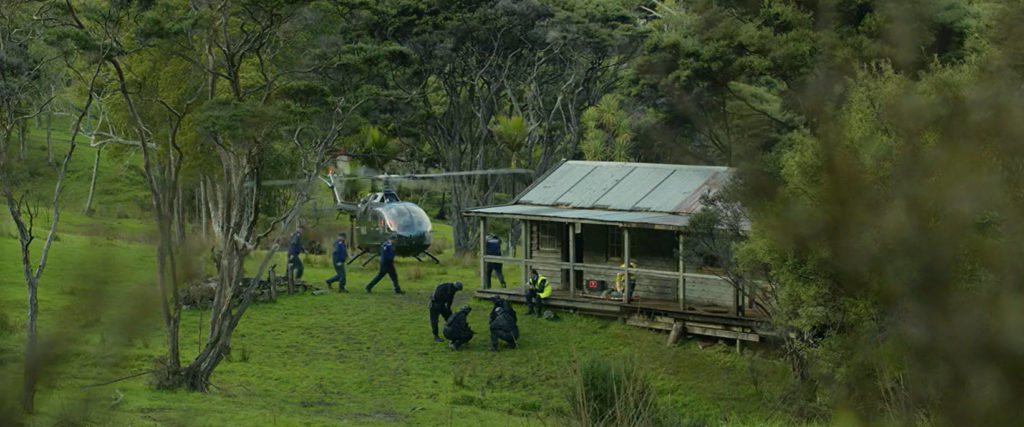
Waititi’s film delves further into colonial violence, revealing the paramilitarised enforcement of state power (Aikman, 2017, p. 56) through child welfare’s comically absurd pursuit of Ricky and Uncle Hec. Aikman (2017) argues that the ‘originary violence’ through which the state took control is periodically re-enacted to maintain colonial power (Aikman, 2017, p. 58). This violence is typically re-enacted at the edges of society, where colonial power is weakest, and media presentation is limited (Aikman, 2017, p. 57), shrewdly captured in the militant pursuit of Ricky through the New Zealand bush (Figure 5).
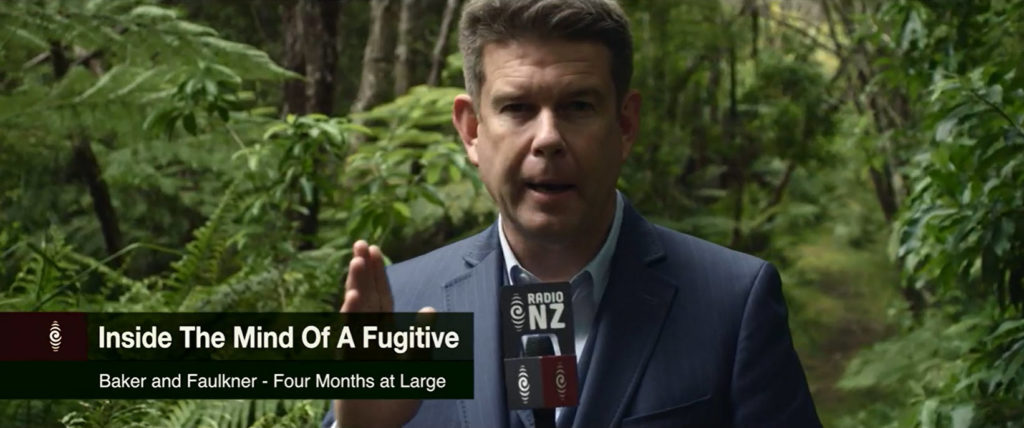
In chapter “The Knack”, aggressive non-direct sound accompanies shots of helicopters, dogs, and armed paramilitaristic personnel, with this exaggerated combat imagery critiquing the state’s historical and violent mistreatment of Māori youth (Aikman, 2017, p. 62). Ricky cries, ‘Oh no! Ninjas! Dire wolves! Child Welfare!’ The use of the word “Ninjas” alludes to the term used by children in Ruatoki Valley to describe the black-clad Armed Offenders Squad during the nation’s infamous 2007 anti-terror raids (Aikman, 2017, pp. 63-64), in which officers with guns and knives destroyed homes, confiscated property and arrested community members under the Terrorism Suppression Act 2002 (Aikman, 2017, p. 66). Peppered through the scenes are extracts of sensationalised news, labelling Ricky and Uncle Hec as “renegade outlaws”, highlighting how media is often culpable for justifying violent state practices (Figure 6) (Aikman, 2017, p. 61). Referencing the violence suffered in colonially remote areas such as the Ruatoki Valley, Hunt for the Wilderpeople features a farcical and theatrical depiction of state intervention to challenge the re-enactment of state sovereignty through violence.
In addition to critiquing colonial influence, both Vai and Hunt for the Wilderpeople celebrate their indigenous cultures, focusing on ‘interior’ values to deconstruct stereotypes and preserve cultures with dignity (Smith, 2020, p. 492). The Pasifika woman directing Vai preserve Pacific Islander traditions, particularly evident in the symbolic and uniting use of vai (water) (Gauthier, 2021, p. 1). Gauthier argues that Pacific Islander epistemology can be seen as “an ocean of knowledge” (Gauthier, 2021, p. 2), exemplified in the ways the film conceptually draws from the directors’ personal experiences from islands across the Pacific ocean, and stylistically features water as a containing and sustaining element of the film (Gauthier, 2021, pp. 8-9). The influential role of women and water resonates through Becs Arahanga’s direction of the film’s final segment, in which 80-year-old Vai baptises her great-granddaughter. Vai is revered as a matriarch and the “lifeblood” of culture in her family (Gauthier, 2021, p. 5), evident in how the single tracking shot is choreographed to ensure she is consistently positioned in the centre of frame (Figure 7).

Correspondingly, Vai is honoured by each generation of her family with kisses, hugs, and the playing of her favourite hymn. She facilitates the practice of their language, even as younger generations reply with mixed English, and safeguards traditions by insisting on journeying uphill to the sacred site and standing in cold water to perform the baptism, despite her frailty (Figure 8) (Gauthier, 2021, p. 5). In the final rite of the baptism, Vai states, “You are the water, and the water is you,” bringing the motif to fruition and using Fourth Cinema to highlight the continuing power of Pasifika women to preserve their traditions.

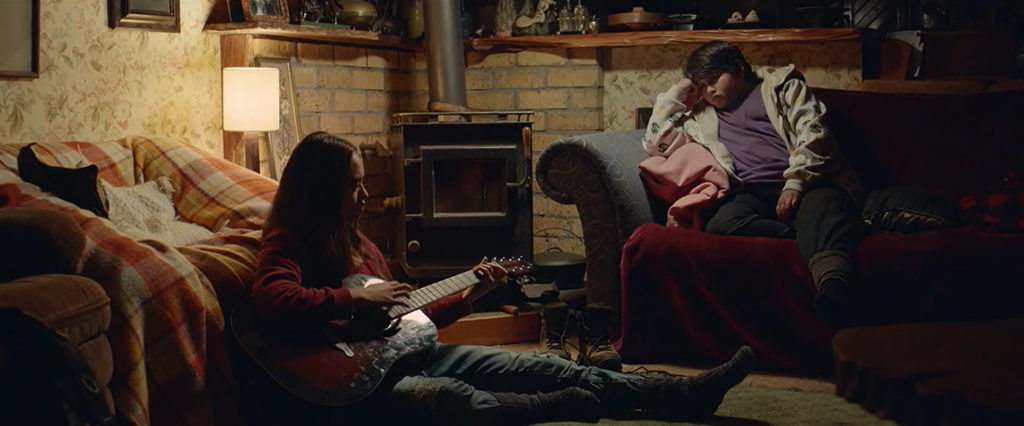
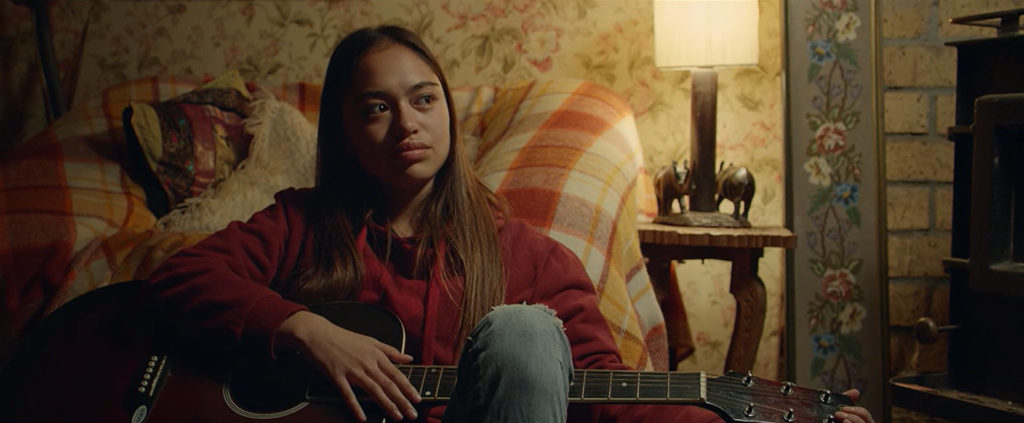
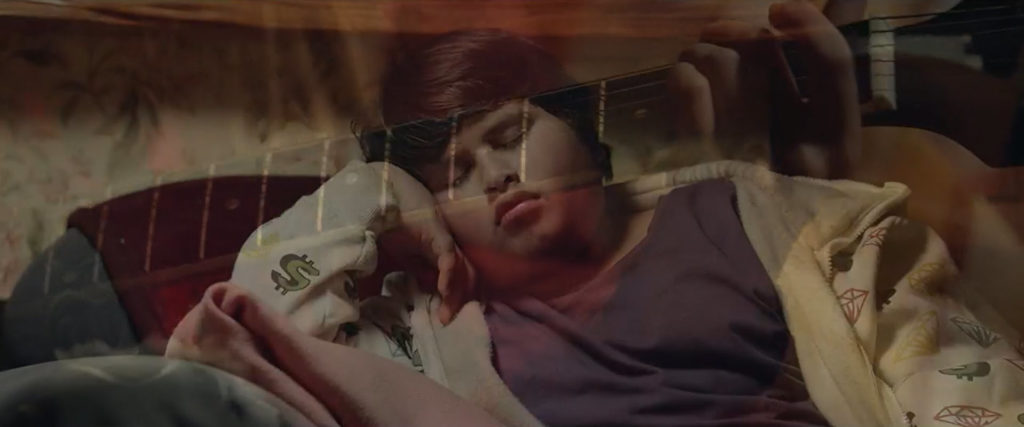
Similarly, Waititi’s Hunt for the Wilderpeople preserves Aotearoan culture, particularly celebrating the Tūhoe value of manaaki tangata (‘be kind and generous to people’) and contrasting with the unjust trends of colonial violence (Aikman, 2017, pp. 72-73). The power of manaaki tangata is made evident in the scenes titled “A Normal Life”. Ricky employs the help of a local family, who is aware of his fugitive status, but are unaffected by the sensational media reporting (Aikman, 2017, p. 58). Their kindness and great generosity is evident in the humorous repetition of “want a sausage?”, which exemplifies the ancient proverb ‘Tūhoe moumou kai’ (‘Tūhoe wasters of food’) (Aikman, 2017, p. 73). The family’s hospitality is visualised in the scenes’ warm lighting and homely mise-en-scène, a fire and layered snug textures, all of which create a safe environment in which Ricky can fall asleep – the first time we see him at complete ease in the film (Figure 9). Waititi’s characterisation of the local people’s generosity to Ricky reveals the flaws in prejudicial colonial violence (Aikman, 2017, p. 73) while celebrating the inclusivity and generosity of Aotearoan value systems.
Conclusively, both Vai and Hunt for the Wilderpeople effectively instigate social awareness while contributing to indigenous communities’ intellectual preservation (Smith, 2020, p. 492). These films critically challenge colonial narratives of Indigeneity, with Vai offering an empowered pan-pacific feminist perspective (Gauthier, 2021), while Hunt for the Wilderpeople presents a theatrically comic response to state violence (Aikman, 2017). The films also celebrate their indigenous cultures, as Vai honours Pasifika women as preservers of Pacific Islander cultures (Gauthier, 2021) and Hunt for the Wilderpeople highlights the Tūhoe value of generosity (Aikman, 2017, p. 72). In this way, the indigenous cinematic culture of the Aotearoan and Pasifika people demonstrates the ability of Fourth Cinema to challenge their postcolonial identities and celebrate their cultures and differences.
References (APA 9th Edition)
Gauthier, J. L. (2021). “An ocean of knowledge”: Vai’s transnational feminist alliances. In Feminist Media Studies (pp. 570–586). https://doi.org/10.1080/14680777.2021.1900311
Aikman, P. J. W. E. (2017). Trouble on the frontier : hunt for the wilderpeople, sovereignty, and state violence. 14(1), 56–79. https://doi.org/10.11157/sites-vol14iss1id378
Smith, J. (2020). Indigenous insistence on film. In Routledge Handbook of Critical Indigenous Studies (pp. 488-500). Taylor & Francis Group.
[…] https://evecogan.com/cultural-identity-in-films-of-the-indigenous-pacific/ […]